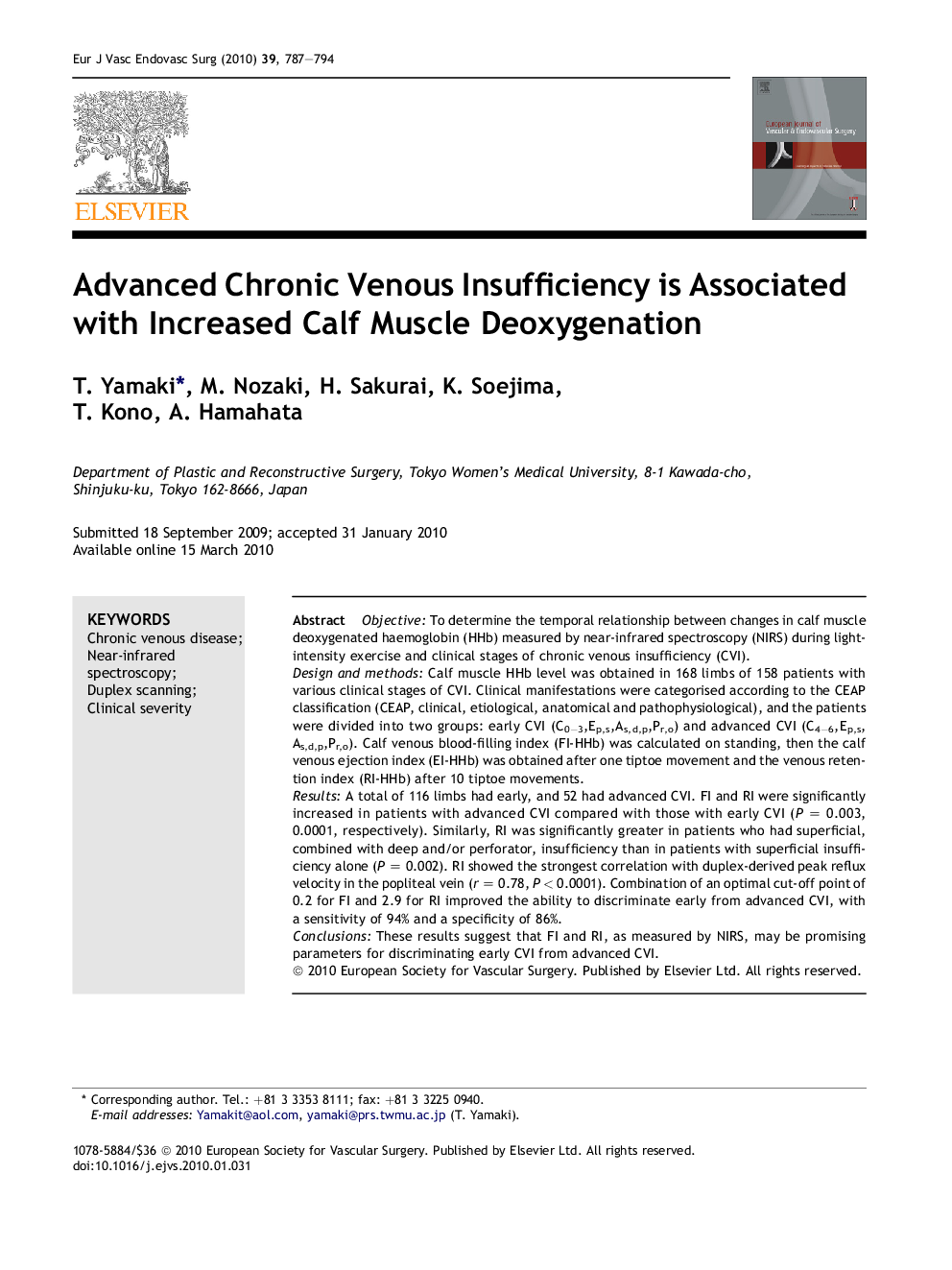| Article ID | Journal | Published Year | Pages | File Type |
|---|---|---|---|---|
| 2914302 | European Journal of Vascular and Endovascular Surgery | 2010 | 8 Pages |
ObjectiveTo determine the temporal relationship between changes in calf muscle deoxygenated haemoglobin (HHb) measured by near-infrared spectroscopy (NIRS) during light-intensity exercise and clinical stages of chronic venous insufficiency (CVI).Design and methodsCalf muscle HHb level was obtained in 168 limbs of 158 patients with various clinical stages of CVI. Clinical manifestations were categorised according to the CEAP classification (CEAP, clinical, etiological, anatomical and pathophysiological), and the patients were divided into two groups: early CVI (C0−3,Ep,s,As,d,p,Pr,o) and advanced CVI (C4−6,Ep,s, As,d,p,Pr,o). Calf venous blood-filling index (FI-HHb) was calculated on standing, then the calf venous ejection index (EI-HHb) was obtained after one tiptoe movement and the venous retention index (RI-HHb) after 10 tiptoe movements.ResultsA total of 116 limbs had early, and 52 had advanced CVI. FI and RI were significantly increased in patients with advanced CVI compared with those with early CVI (P = 0.003, 0.0001, respectively). Similarly, RI was significantly greater in patients who had superficial, combined with deep and/or perforator, insufficiency than in patients with superficial insufficiency alone (P = 0.002). RI showed the strongest correlation with duplex-derived peak reflux velocity in the popliteal vein (r = 0.78, P < 0.0001). Combination of an optimal cut-off point of 0.2 for FI and 2.9 for RI improved the ability to discriminate early from advanced CVI, with a sensitivity of 94% and a specificity of 86%.ConclusionsThese results suggest that FI and RI, as measured by NIRS, may be promising parameters for discriminating early CVI from advanced CVI.
